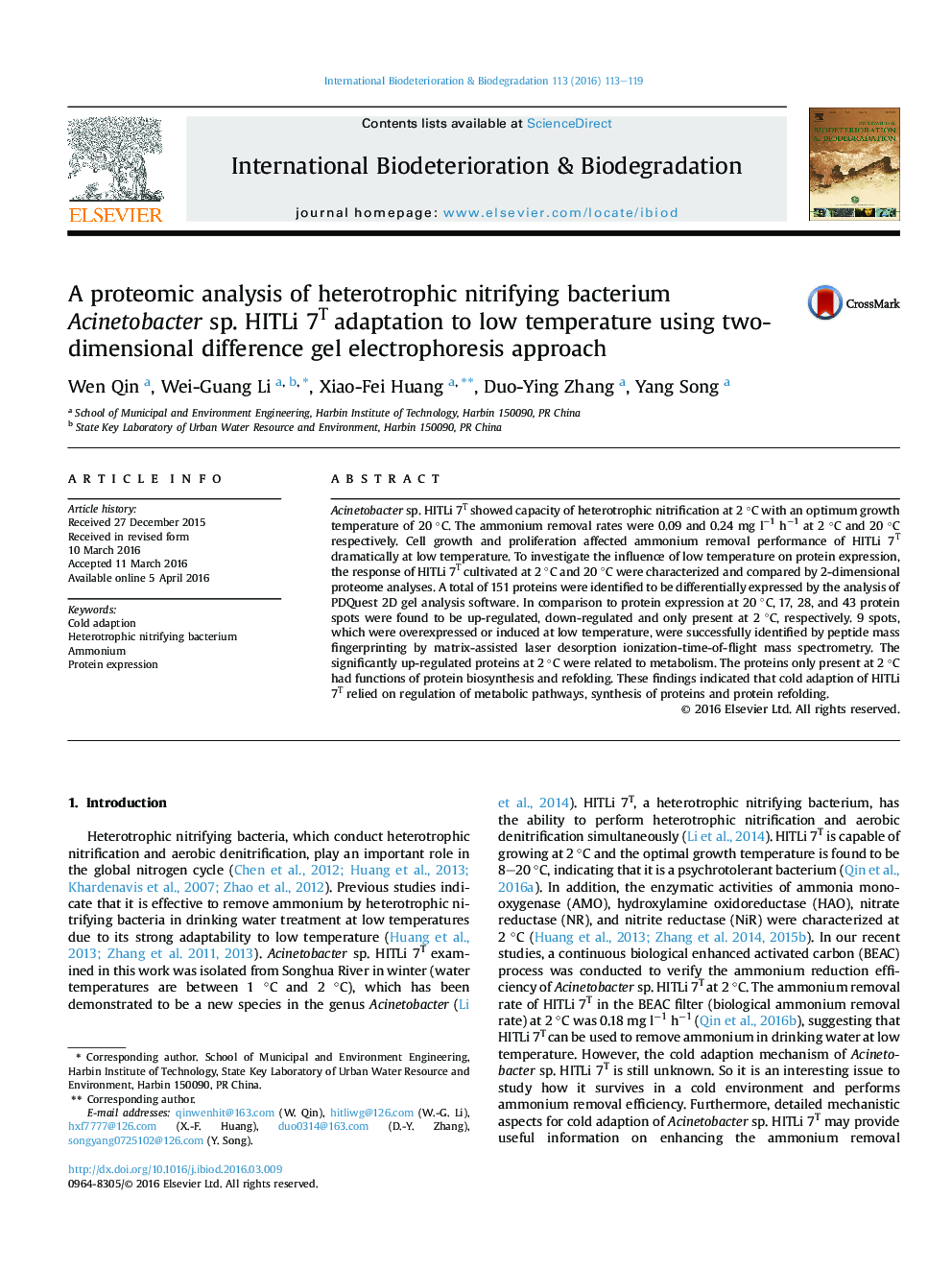| Article ID | Journal | Published Year | Pages | File Type |
|---|---|---|---|---|
| 4364076 | International Biodeterioration & Biodegradation | 2016 | 7 Pages |
•The proteome of HITLi 7T, grown at 2 °C and 20 °C, showed significant differences.•Overexpressed proteins at 2 °C included translation and metabolism-related proteins.•Some general stress-inducible proteins were evident of cold stress response.•No connection between change of membrane fluidity and cell wall adaptation was found.
Acinetobacter sp. HITLi 7T showed capacity of heterotrophic nitrification at 2 °C with an optimum growth temperature of 20 °C. The ammonium removal rates were 0.09 and 0.24 mg l−1 h−1 at 2 °C and 20 °C respectively. Cell growth and proliferation affected ammonium removal performance of HITLi 7T dramatically at low temperature. To investigate the influence of low temperature on protein expression, the response of HITLi 7T cultivated at 2 °C and 20 °C were characterized and compared by 2-dimensional proteome analyses. A total of 151 proteins were identified to be differentially expressed by the analysis of PDQuest 2D gel analysis software. In comparison to protein expression at 20 °C, 17, 28, and 43 protein spots were found to be up-regulated, down-regulated and only present at 2 °C, respectively. 9 spots, which were overexpressed or induced at low temperature, were successfully identified by peptide mass fingerprinting by matrix-assisted laser desorption ionization-time-of-flight mass spectrometry. The significantly up-regulated proteins at 2 °C were related to metabolism. The proteins only present at 2 °C had functions of protein biosynthesis and refolding. These findings indicated that cold adaption of HITLi 7T relied on regulation of metabolic pathways, synthesis of proteins and protein refolding.
